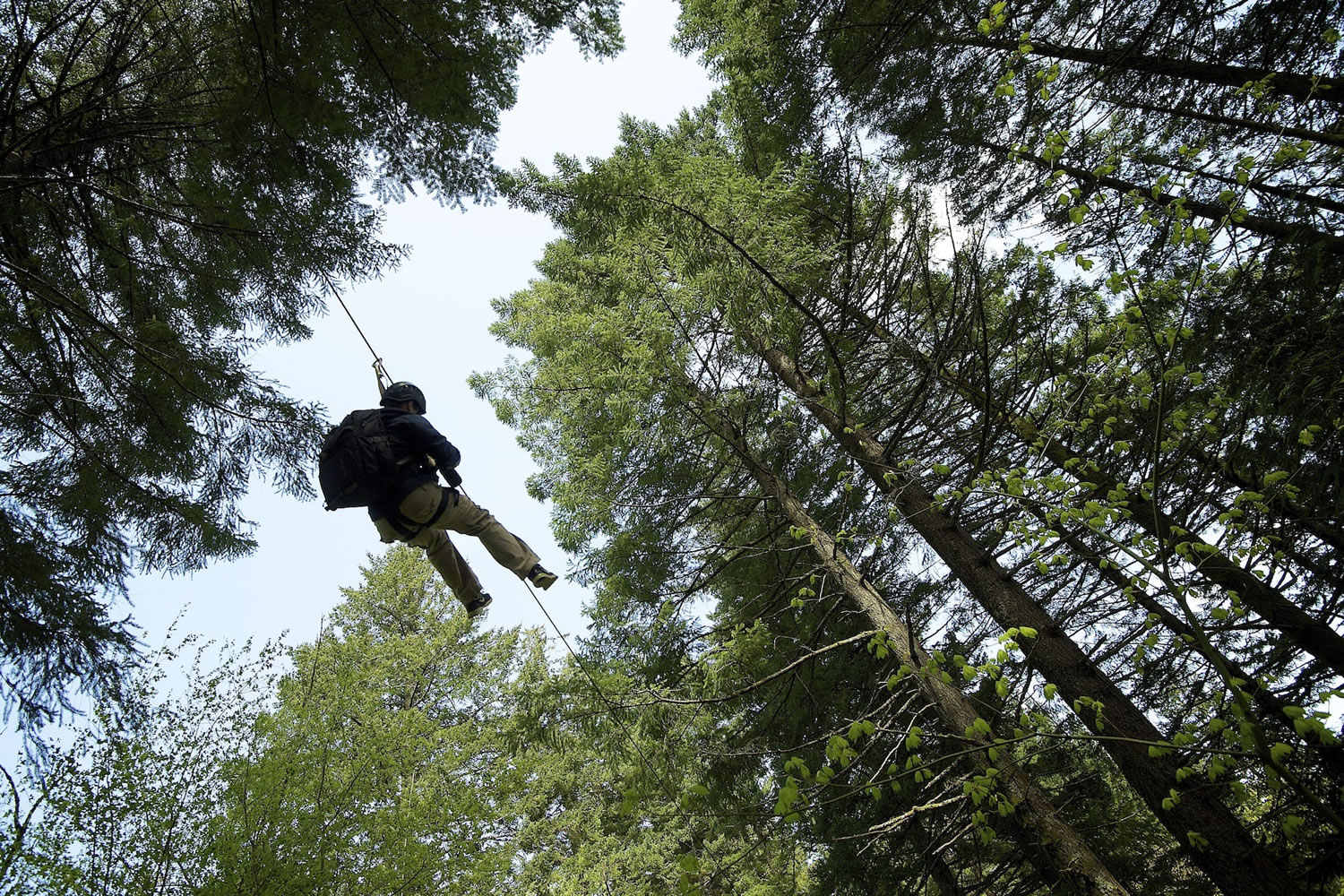• What: A guided two-hour zip line tour through a canopy of moss-covered firs.
Where: Skamania Lodge, 1131 S.W. Skamania Lodge Way, Stevenson.
When: Opens May 4; runs seven days a week.
Cost: $99 per person.
How: Reservations are recommended. Call 509-427-3800 or book online at zipnskamania.com
• The seven “zips” range from 100 to 900 feet in length.
• Tour includes ramps, stairs, tree decks and short hikes.
• No open-toed shoes allowed (hiking boots preferred).
• Riders should dress in layers because of varying temperatures.
• Must weigh between 75 and 270 pounds.
• All gear is provided and the tour is completely guided.
• Riders cannot be pregnant, or have prior injuries or surgeries that limit the use of extremities.
• The course is closed during times of high winds or lightning.
The first step off the ledge, as your stomach plummets, is the scariest.
But, sometimes you have to trust in your harness, your helmet and your gut to bring on the adrenaline rush.




